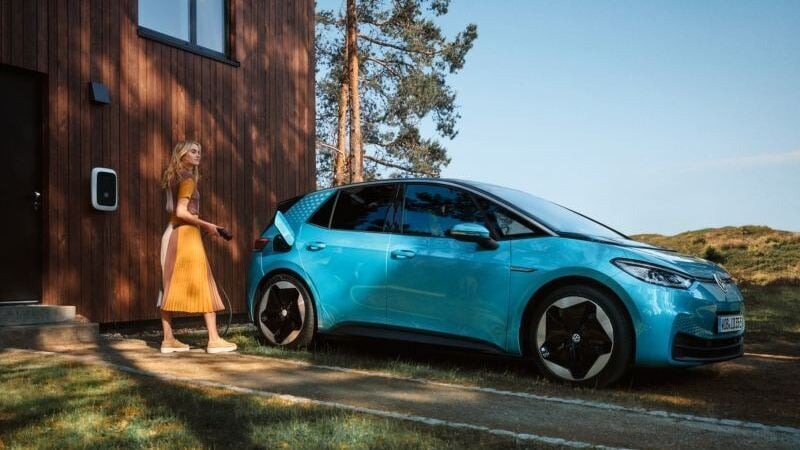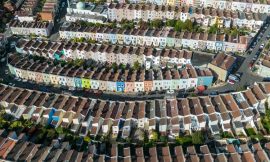Analysis: new technology means you can use electric cars to directly power your home or even send power to the grid
A new piece of technology is becoming increasingly popular with electric vehicle owners. It has the potential for the vehicle to save you money, and may even be able to earn money for its owner in the future. This technology is called vehicle to grid or V2G for short and it may have benefits to you as an owner, and for our national grid.
First, though, let’s look at some of the other capabilities of a vehicle equipped with this technology. Cars that have this function can usually also send electricity from its battery to power items that would typically need to be plugged in at home. This is called vehicle-to-load or V2L. This has a lot of practical benefits as it can allow you to run equipment in remote locations, such as a fridge while camping or power tools on a remote site. The new Ford Lighting has made this a major part of its advertising campaign and it has proven very popular with American consumers.
We need your consent to load this YouTube contentWe use YouTube to manage extra content that can set cookies on your device and collect data about your activity. Please review their details and accept them to load the content.Manage Preferences
From Transport Evolved, what’s vehicle-to-home and vehicle-to-load all about?
A similar function is called vehicle-to-home or V2H. As the name suggests, this allows an electric car to directly power your home in the event that there is a power outage. In scenarios where continuous electricity supply is essential – say, a medical device that needs to be used daily – this function can allow a home to use the electrical energy stored within a vehicle’s battery to run all the essential appliances within. On a typical 30kWh a day, this could allow a home to run independently for three days or, if you were to ration your use and reduce to 10 kWh a day, the home could remain powered for up to 10 days off the grid.
If you have invested in solar panels for your home, this additional storage will allow you to extract better value from your own electricity generation by using it when it benefits you most. But even if you do not have solar panels installed, owners can use the national grid to save a considerable amount of money. If you are on a variable electricity plan where electricity costs less at night when there is less demand, you can buy electricity very cheaply and use it to power your home when prices are typically much higher during the day.
This supply and demand pricing reflects the challenges of ensuring there is enough capacity in the national grid when the majority of people are using it between 4pm and 8pm. National grids often struggle to react to these peak demand periods and this has highlighted energy storage as a major challenge as we move to a renewables based grid. You can check the varying load on the Irish grid today using live data.
We need your consent to load this rte-player contentWe use rte-player to manage extra content that can set cookies on your device and collect data about your activity. Please review their details and accept them to load the content.Manage Preferences
From RTÉ Brainstorm, could super-villains use your smart kettle to disrupt the power grid?
This is where “vehicle-to-grid” becomes important. If even a fraction of electric vehicles are connected and equipped with V2G, a national grid would have an enormous reserve of electricity to draw from at peak times. This would essentially see each car acting as a mini power station that is ready to sell its energy back to the grid when requested.
This could be set by the user. If they wished to make 30% of their capacity available at certain times, they could sell this amount of electricity back at a higher price. Or if they decided to not opt in on Tuesdays, because that’s when they have a long commute, they could limit the availability of their own storage capacity.
In order for this to work, owners would need to be financially incentivised and national grid operators would need to proactively seek out this form of energy storage. Trials are currently being run around the globe that include most major EV manufacturers. Currently Ford and Nissan offer V2G functions, Hyundai and Kia offer V2L and future VW models will include the hardware required for V2G.
We need your consent to load this rte-player contentWe use rte-player to manage extra content that can set cookies on your device and collect data about your activity. Please review their details and accept them to load the content.Manage Preferences
From RTÉ Radio 1’s Morning Ireland, Cian McCormack reports on a proposed microgeneration support scheme which allows people and communities sell electricity to the national grid.
Although Tesla does not offer any of these functions in its current line-up, its head of battery development has suggested the design of future batteries takes this role into account. It appears as if electric vehicle manufacturers, consumers and grid operators have recognised the many benefits of this technology.
With each small step forward in technology, we move closer to a more secure and less carbon intensive electricity grid. If this technology is suitably supported and integrated, it has the potential to benefit electric car owners and could encourage more people to make the switch.
The views expressed here are those of the author and do not represent or reflect the views of RTÉ




